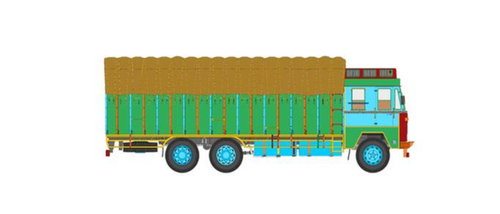Cement is one of the world’s most extensively utilized building materials. We can’t picture our modern world without it, whether for buildings, bridges, or tunnels.
Because cement is a costly substance, it should be carried and kept with care during construction. Cement is a porous substance that absorbs moisture. As a result, it is critical to ensure that cement raw material transportation is being done carefully. You can save money by carefully loading/unloading (transportation) and storing cement bags.
How to Transport Bulk Cement?
There are mainly four ways wherein you can make the transportation of bulk cement. They are as follows:
Way1: Bagged Cement
Bagged cement is typically utilized in locations where there are no designated mixing stations or storage containers. The drawbacks include a lot of dust, low efficiency, and a lot of injury to the human body.
They also necessitate a great deal of packaging for transit and unpacking for use at their site. All of these processes raise the cement’s overall price. Although they are appropriate for modest jobs, they may not be adequate for large construction projects.
Way2: Bulk Cement Trailer
A bulk cement trailer has the capacity to transport more than 100 tonnes of cement. The cement is compressed air pumped through cement pipes to a cement silo on site.
The key benefit of this way of transport is that it is well sealed and hence will not leak. Furthermore, it provides simple transportation options, particularly for large projects requiring large quantities of cement.
Way3: One Ton of Packing
There is another type of bag, in addition to standard bagged cement: one-tonne packaging.
It’s all done using forklifts or cranes rather than by hand. It also eliminates issues such as excessive dust. However, it is inefficient because it does not provide an optimal solution for various cement needs and requirements.
Way4: Small-Packaged Bags
Small-packaged bags are employed when a significant amount of cement is not viable to use in all projects.
If you want to build a pool at home, for example, you’ll need little bundled sacks of cement. There will be no cement spills or dust as a result of this. It is, above all, simple to use.
What to Keep in Mind While Transporting Cement
Because cement is such a fine product, a number of considerations must be made both before and during shipment. Damages to the product can occur if it is not handled and transported with care, leaving it useless.
Make sure your cement transport van isn’t overloaded. It has the potential to cause damage to the vehicle. It can also impair the vehicle’s maneuverability, which can lead to longer travel times or the occurrence of accidents. Fill cement bags to the maximum extent possible.
Cement bags should be piled on pallets on the truck bed if rain or fog is forecast during a cement bulker or cement truck shipment. Cement bags should not be placed directly on a wet truck deck. Water streaming upward from the truck’s deck should not soak the cement bags. Thus they should be covered with canvas and a tarp.
Cement bags must be loaded and unloaded with caution and safety. On days when the weather is severe, cement transportation should be avoided if at all possible. Cement bags must be handled properly and then stored in a room once the vehicle has arrived at the site or the desired destination.
Wrapping Up:
At high temperatures, cement deteriorates quickly. As a result, before loading cement onto a transportation vessel, the temperature of the cement should always be below 100 degrees Celsius.
It is highly advised that while shipping cement, you work with a company that has the necessary skill and knowledge in cement raw material transportation to avoid such issues and ensure safe transportation.


















